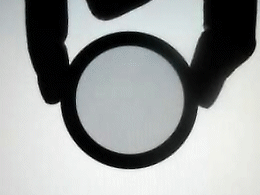New cinema filters from Moment
Ever found the light is just too bright to bring your frame rate down to the cinematic-look standard of 1/48 or 1/50 shutter speed? The way to fix that is to reduce the light hitting the sensor of your camera. While inside you can turn lights off or down, there’s as yet no way to do the same with the sun.
Hence the need for ND filters.
ND (Neutral Density) filters filter out a percentage of the light hitting your camera sensor. They say it’s like putting sunglasses on your camera. The stronger the ND filter, the higher percentage of light gets filtered out.
Traditionally, a shutter speed of 1/48 second is standard. But filming under sunlight often requires a much faster shutter speed to get a good exposure. And a fast frame rate means the video can look harsh and choppy.
Read more: Frame Rates – Basics Explained
Unlike cinema cameras, mirrorless or DSLRs, smartphone phone cameras either have no adjustable aperture, or very limited (for example, my Samsung S9 has 2 aperture settings: 1.5f and 2.4f). This means when trying to reduce shutter speed on your smartphone, your only option is to reduce ISO.
But once you hit the smallest ISO and aperture settings, your only option is an ND filter.
Moment’s New Filter Adapter
While Moment already produce filters, they need to be mounted on a Moment lens. So what if you wanted to use your native smartphone lens with an ND filter? To solve that problem, Moment have designed a filter mount that attaches directly to the Moment case.

Moment now offer five different strengths of cinematic-look ND filter: ND 4 (two stops), ND 8 (three stops), ND 16 (four stops), ND 32 (five stops), and ND 64 (six stops). Each filter is sold separately and priced at $35.
They also produce a Moment Cine CPL (Circular Polarizer) priced at $45.
Polarizing filters
These filter out “polarized” light and can dramatically reduce reflections. They can also enhance colours and increase contrast. Polarizing filters are typically circular, allowing for easy control of the effect of polarization.

Polarizing filters are often used in landscape photography. A CPL (Circular Polarizer Filter) blocks scattered light from entering your camera lens. As you rotate the filter, you are choosing which light block, depending on the angle it is hitting your lens at.
The effect can be quite subtle or quite dramatic, depending on what you are filming, the filter and how you use it.
Both Moment’s ND and CPL filters use anti-static and hydrophobic coatings to resist dust and water. Mostly used for video shooting, you can also use them for still photography. They’re compatible with both the standard and telephoto lenses on an iPhone XS.
The adapter is compatible with other filters with a 37mm thread, so you’re not limited to using Moment’s filters.
Moment’s filter adapter Official Store (no affiliation).
Check out our Official Smartphone Filmmaking KIT LIST.
Eager to learn more?
Join our weekly newsletter featuring inspiring stories, no-budget filmmaking tips and comprehensive equipment reviews to help you turn your film projects into reality!
Simon Horrocks
Simon Horrocks is a screenwriter & filmmaker. His debut feature THIRD CONTACT was shot on a consumer camcorder and premiered at the BFI IMAX in 2013. His shot-on-smartphones sci-fi series SILENT EYE featured on Amazon Prime. He now runs a popular Patreon page which offers online courses for beginners, customised tips and more: www.patreon.com/SilentEye

